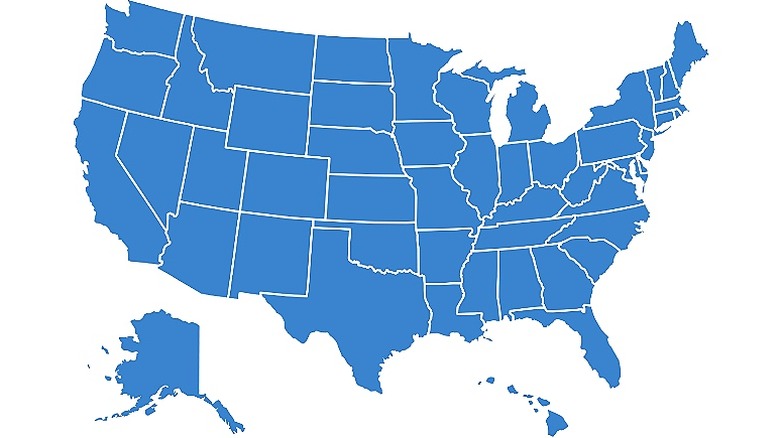Retirees In These States Will Receive The Biggest Social Security Increase In 2025
As we approach the end of the year, many Americans might already be planning ahead financially. This can be especially true for retirees receiving Social Security. Since rate adjustments occur every year with Social Security benefits (2025's new cost-of-living adjustments or COLA rates are due to be announced in October), many retirees might have to recalculate their budgets to fit any upcoming changes to their overall monthly benefit amount. Plus, 2025 could prove to be a more challenging year than usual due to the fact that experts predict a COLA rate of 2.5%, the lowest increase since 2021.
However, there can be a LOT to understand about the exact way that Social Security benefits are calculated. From your lifetime income to what age you chose to start claiming your benefits, many factors can ultimately impact your overall benefits amount in retirement. Perhaps one of the most significant factors to consider is what state you live in. Since certain states have higher incomes, the lifetime income amounts in those states can lead to higher Social Security amounts than others.
As Alex Beene, financial literacy instructor for the University of Tennessee at Martin, explained to Newsweek, "The reason for some states seeing higher Social Security increases is more simple than some may think. It doesn't come down to any type of complicated calculation in distribution of benefits, but simply through the fact that these states tend to have higher median incomes than the national average, and those incomes are reflected in the eventual Social Security benefits recipients receive."
States with higher benefit amounts
Looking at existing data, The Motley Fool calculated the states with the highest median monthly Social Security benefit amounts as of December 2023. At the top of the list was New Jersey with median monthly benefits of $2,100. Next up was Connecticut with $2,084, Delaware with $2,064, New Hampshire with $2,039, and Maryland with $2,008. Other states in the top 10 were Michigan, Washington, Minnesota, Indiana, and Massachusetts. By factoring in an estimated 2025 COLA rate increase of 2.5% to these existing median amounts, retirees in New Jersey will more than likely see an extra $52.50 every month in 2025. At the bottom end of the top 10, retirees in Massachusetts, who receive $1,946 a month, will see a $48.65 increase to their monthly benefits amount.
It's important to realize that the reason retirees in these states will experience a bigger increase in 2025 is simply due to the fact they started from a higher baseline to begin with, not that they are inherently receiving more money. According to Newsweek, many of the states in the top 10 list for benefits amounts have higher incomes (for instance, New Jersey, New Hampshire, Maryland, and Washington and Massachusetts all rank in the top 10 for median incomes). This means retirees in these states are already receiving higher monthly benefits amounts, which consequently come with larger increases from a COLA. Since COLA rates apply a percentage increase to a retirees already existing benefits payment amount, the more you start with, the more the COLA rate will increase your monthly payments.
Other Social Security considerations
This said, it's worth mentioning that some of the states in the top 10 for median income actually simultaneously appear in the bottom 10 for median Social Security benefits. This is largely due to cost of living and the fact that many retirees choose to move to different states than they might have lived and worked in throughout their career. This can affect the overall list of states with the highest benefit amounts (especially when compared to high income states). so even if your state doesn't appear in the top 10 list, it doesn't necessarily mean your specific payments will be detrimentally smaller.
It's also worth remembering that the cost-of-living adjustment changes every year, and that, since COLA is calculated to help offset inflation, it's never a guaranteed amount. This variable is why it's important to budget your retirement without factoring in COLA, since its changing rate could lead you to budgeting shortfalls. This is especially concerning when you realize that the majority of Americans are already concerned their money will run out in retirement.
According to Allianz Life's 2024 Annual Retirement Study, 24% of respondents reported that Social Security not offering the necessary financial support was one of their top worries about retirement. This, on top of the fact that current estimates have Social Security running out of funds in 2035 make it more important than ever to plan ahead with your retirement savings. By taking advantage of plans like pensions, 401(k)s, and/or IRAs, you can better prepare for your retirement future.


